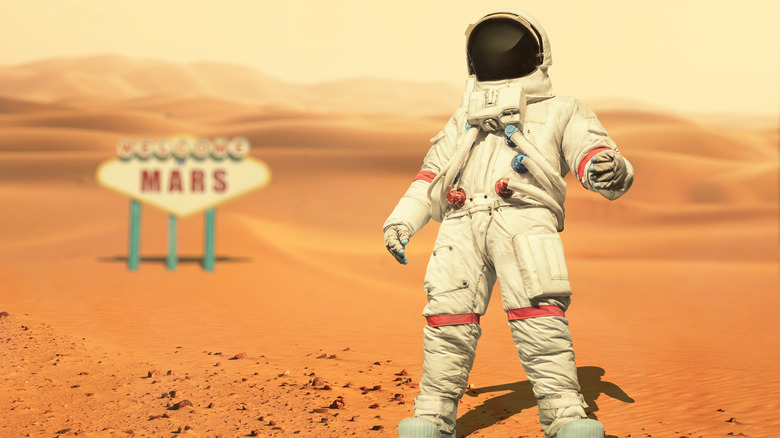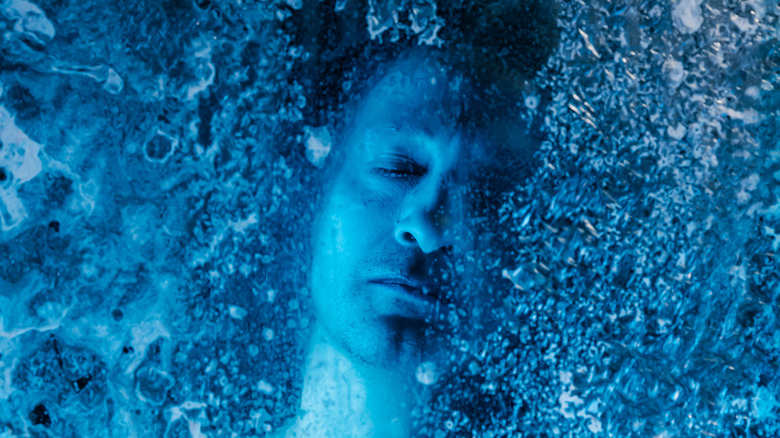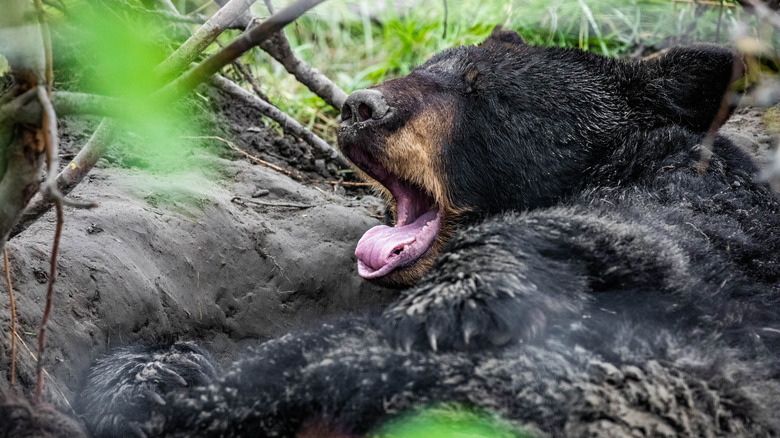Why Cryogenic Sleep Could Play An Important Role On The Trip To Mars
For decades, cryogenic sleep has been a plot device in science fiction movies and books. It's an easy way to explain how a protagonist can remain alive while making those long space flights to far-flung galaxies. But NASA is taking what was once fiction and attempting to make it a reality as they prepare to return to the moon and look ahead to sending astronauts to Mars.
A trip to Mars isn't as simple as taking a road trip to see Grandma. It's not like hopping in a car and driving to a static destination where the distance is always the same. A trip to Mars takes far more planning because the distance between Earth and Mars constantly changes due to their orbital paths around the sun. The closest it can be is 34.8 million miles away, but when the two are on opposite sides of the sun, it can be as far away as 250 million miles. On average, the two planets are approximately 140 million miles apart. According to NASA, a one-way trip to Mars would take about nine months, and a round-trip journey would last about 21 months. Again, it's not like hopping in a car. Once there, the astronauts would need to stay three months for the orbits to line up correctly and begin the return journey.
Nearly two years may not seem like a lot of time, but the logistical requirements for any crew play into planning a space mission as much as the overall health of the astronauts.
Deep freeze sleep for deep space
If the crew stays awake during the entire mission, NASA would need to pack two years' worth of food and water for each crew member aboard the ship. Placing them into a type of suspended animation for most of that time would reduce their food intake dramatically and allow the vessel to be one-third smaller, thereby reducing the cargo space to store it all. Reducing the size of the ship also reduces the amount (and cost) of fuel needed to get to the Red Planet, which in turn reduces the overall cost of the mission significantly. Simple logistics issues are the primary reason for putting a crew on ice. However, long-term exposure to radiation and the mental health of astronauts cooped up in tiny quarters also factor into the cryogenic sleep plan (via Smithsonian).
Cryogenics works by preserving the body in a state of deep freeze. According to Inverse, a type of antifreeze for the body replaces the water inside each cell and is then cooled to -220 degrees Fahrenheit. The antifreeze slurry prevents the cells from turning into ice and exploding, keeping the body in a suspended stasis for however long it is needed. But some hurdles come with this process, not the least of which is it hasn't been perfected. There are also moral and legal ramifications associated with the process. For instance, a person can't be cryogenically frozen until they are declared legally dead first.
Hibernating bears and lemurs may hold the secret to space exploration
NASA has been studying how bears and lemurs hibernate in hopes of putting astronauts into a similar state of cryogenic hibernation without all the associated risks and legal issues. Bears and humans have similar body mass yet can shut their bodies down by dropping their core body temperature only a few degrees, not the hundreds of degrees required for cryogenic freezing. According to bear researcher Heiko Jansen (via Wired), their heart rates decrease tremendously, but they experience no cardiovascular issues. They also don't lose any bone density or muscle mass, while humans lose considerable muscle mass if they're bedridden for an extended period of time. Plus, long-term exposure to the weightlessness of space also has an adverse effect on bone density and muscle growth because there's no gravity for the muscles to work against.
Scientists studying mouse lemurs discovered microRNAs act as an on/off switch for particular body functions. Some stayed on to protect the animal, and others turned off to save energy within the body. For instance, some microRNAs fought off muscle atrophy while others stopped cells from growing or even dying, and some automatically switched which fuel types the body used.
If these genetic traits could be understood and replicated, they could one day help astronauts venture further out into the reaches of space.


